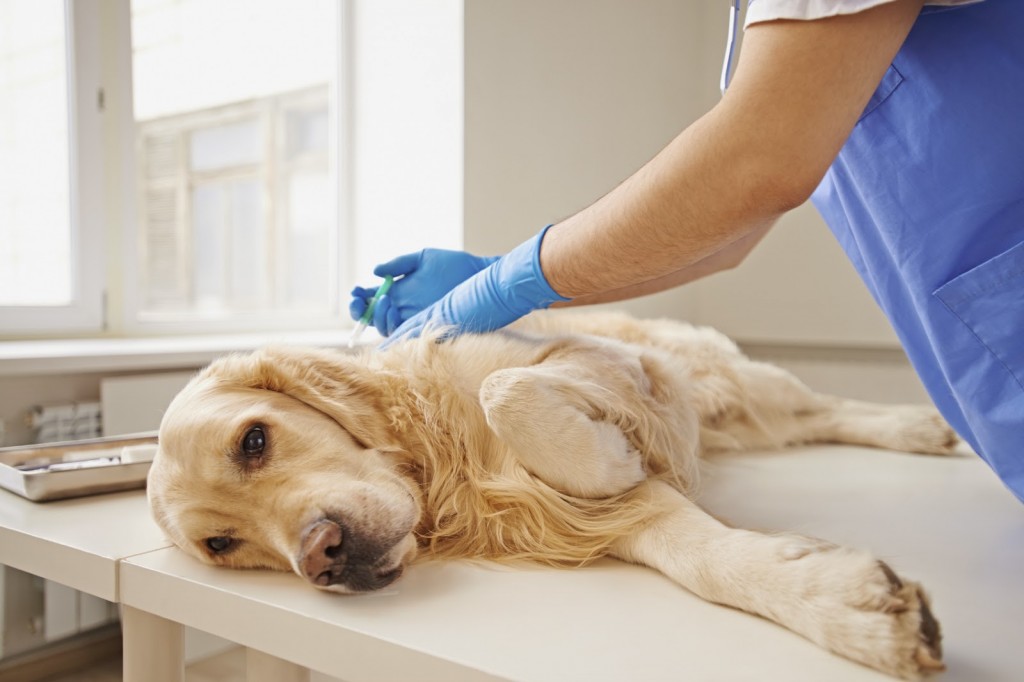
According to a recent article published by USA Today (June 2014), the number of pets euthanized for economic reasons is on the rise. As the cost of veterinary treatment has increased — in great part due to significant advances in veterinary medicine — the ability of pet owners to pay for veterinary care has declined.
Pet Owners Fear Cost of Treatment
Anecdotal evidence gathered by USA Today includes quotes from both veterinarians and animal shelter workers who say that the incidence of “economic euthanasia” has increased dramatically in recent years. At one veterinary clinic in Fredericksburg, VA, the practice owner noted that two-thirds of the pets put to sleep each week are euthanized because their owners can’t afford to care for them. In one case, a dog had to be euthanized due to a salmonella infection, because his owners waited over a week to bring him to the vet. The reason for the delay? Fear of the cost of treatment.
Despite Increased Spending on Pets Overall, Veterinary Costs Higher Than Expected
According to the American Pet Products Association and the Humane Society of the United States, there are 83.3 million dogs and 95.6 million cats in the United States. Their owners spent approximately $55 billion on these pets in 2013, an increase of $2 billion dollars since 2012. Despite the willingness to spend on our pets, who in many cases are considered family members, many of us can no longer afford the significant upfront cost of veterinary care — particularly if it involves emergency or surgical treatment. Even routine and preventive care has become costly. In 2011, the Bayer/Brakke Veterinary Care Usage Study found that 53% of respondents agreed with the statement, “the cost of a routine vet visit is usually much higher than I expect.”
Vet Costs a Hot Topic, Even on Primetime TV
The issue of high veterinary costs is a prevalent topic these days, so much so that it has even made its way into television prime time. On a recent episode of FX’s “Married,” starring Judy Greer and Nat Faxon, the plot centered around a $5,000 vet bill — and how to pay it. While 76% of pet owners report that they would spend “any amount necessary” to keep their pet alive, in reality most owners aren’t prepared for the reality of treating an emergency or catastrophic illness, and are devastated — emotionally and financially — when hit with a vet bill for thousands of dollars.
Pet Health Care vs. Finances: Finding a Balance
Obviously the question on the minds of both pet owners and veterinarians is “how can veterinary treatment be made more affordable?” There is a glaring gap between the level of care that owners want for their pet, and their ability to pay for that care. From the veterinarian’s point of view, it is frustrating that providing optimal care for every pet is often encumbered by financial barriers.
There are actually several ways to address the issue of managing veterinary costs, in order to achieve a more comfortable balance between the desired level of care and pet owner finances. The best solution is likely to be a combined strategy, in which pet owners avail themselves of all available means for cost containment.
Strategies for Managing Veterinary Costs
Third-party Payment Plans
When you visit your veterinary hospital, ask about the availability of third-party payment plans — and not just financing plans, but installment payment plans in which the cost of an expensive procedure can be spread out over time. Installment payment plans can be a better choice if you don’t want a credit inquiry showing on your credit report, and you will also avoid being hit with a high interest rate if you miss a payment, or can’t pay off your balance in the specified time frame.
Pet Insurance
Consider buying pet insurance. There are many plans available, and a good place to start is by asking your veterinarian for some recommendations. You should compare plans, and consider what a policy covers. You should also assess the affordability of the deductible and premium; the process for submitting claims; and the length of time for reimbursement. You should also note any exclusions for preexisting conditions or specific illnesses that might not be covered.
An excellent resource for evaluating, comparing and educating yourself about types of coverage and various plans is available at Pet Insurance University. Do not purchase a policy before you have visited this web site!
Wellness/Preventive Care Plans
Enroll your pet in an annual wellness plan if your vet offers one. Also known as “preventive care plans,” these are typically one-year contracts that cover the cost of routine preventive care. Plans are priced differently depending on the stage of your pet’s life, or the level of services provided. The cost of the plan can be paid in full, or in some cases, in monthly installments, making it easier to work veterinary expenses into a household budget.
Financial Assistance through Charitable Organizations
Another avenue to explore is charitable organizations dedicated to veterinary financial assistance. Some groups provide funds for owners of specific breeds, others may offer help for particular diseases, such as cancer or cardiovascular disorders. Still others serve pet owners in certain geographic areas. A comprehensive list of organizations that provide veterinary financial assistance can be found on the web site VeterinaryPartner.com. Identifying which organization you might want to use, before you need it, can help give you peace of mind.
Coupons, Discounts, Promotions
Keeping up with coupons or special offers for discounts at your vet is another way to reduce costs. Including your veterinarian’s Facebook page in your newsfeed is a good way to stay informed about marketing promotions that may benefit your bank account. Some vets write newsletters, so subscribe if you can, and watch the mail for promotional offers that come from animal health care companies. You may be able to redeem a coupon for heartworm medication or flea and tick preventative, among other things.
It is reasonable to expect that the cost of pet health care will continue to rise, due to continuing advances in diagnostic and therapeutic options. With that in mind, pet owners will benefit from developing a comprehensive financial plan for managing veterinary costs. By combining available resources (pet insurance, wellness plans, charitable funds, payment plans) instead of taking a singular approach, fewer pet owners will have to face the gut-wrenching dilemma of choosing between their pet’s life and their pocketbook. It is possible to avoid “economic euthanasia.”
Sources:
USA Today, “Euthanizing pets increasing as vet costs rise,”http://www.usatoday.com/story/news/nation/2014/06/07/economic-euthanasia-increases…, June 2014
MSN Money, “Is pet insurance worth the cost?” http://money.msn.com/insurance/is-pet-insurance-worth-the-cost, June 2014
VeTeam Advisor supplement, “The Cost of Pet Health Care,” J. Schori, VMD, ed. May/June 2013
JAVMAnews, “Banking on wellness: Practices try out monthly payment plans to promote preventive care,” https://www.avma.org/News/JAVMANews/Pages/140501a.aspx?PF=1, May 2014
VIN News Service, “Veterinary nonprofits: unfair competitors or worthy charities?,”http://news.vin.com/VINNews.aspx?articleId=31591 April 2014
VIN News Service, “Help exists for those struggling to pay veterinary bills,”http://news.vin.com/VINNews.aspx?articleId=31027, May 2014
Pet Insurance University, http://www.pet-insurance-university.com/

The problem I’m finding with pet insurance is that they only reimburse you after you file a claim. Problem is, most vets won’t direct bill the plans and demand payment up front, THEN you file a claim with your insurance. You’re in a Catch-22 situation. You have the insurance because you’ve been paying for it, but you don’t have the funds to put up to be able to file with the insurance. The pet is the one who pays the ultimate price.
You’re exactly right, Jane. I have pet insurance and it always failed me when I needed it most – managing huge, unexpected upfront costs. This had much to do with the impetus for creating VetBilling. Thank you for your comment. I know many pet owners -including myself-agree with you! It is very unfortunate. The pet insurance model, as it is currently structured, is not truly helpful.
Sadly, I have lost 2 dear pets because of this situation. I didn’t have $5-10K to outlay upfront to the emergency vet and they wouldn’t direct bill. I had to make the eternally painful decision to euthanize. It tore me apart and I will ALWAYS regret it. There has to be a better way. Our pets deserve much better than this.
Jane, we are so sorry for your loss. We are working very hard to change the business model of the veterinary profession so this adversarial relationship will be a thing of the past. By working together it can be a win win for all parties involved.